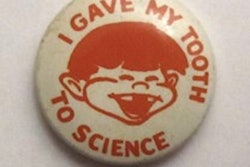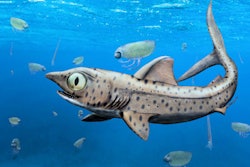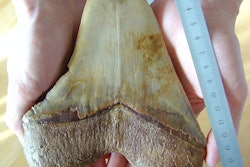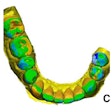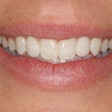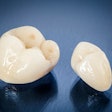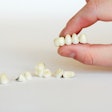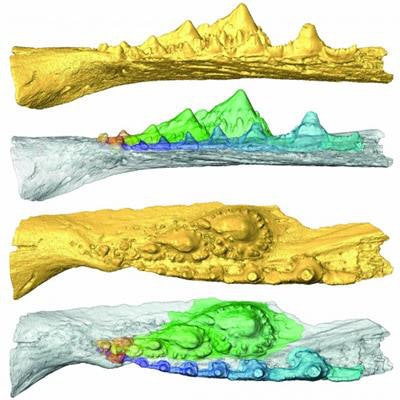
Researchers studying the history of shark teeth found that the dentition of prehistoric shark ancestors differs greatly from that of modern-day sharks -- upsetting the hypothesis that teeth have a universal development method.
The team of European investigators used high-energy x-rays and state-of-the-art estimation methods to study tooth and jaw structure and development among shark ancestors. They published their findings on May 6 in Nature Ecology & Evolution.
 Side and oral views of a virtual model of the jaw of a shark ancestor showing the rows of teeth and reconstruction of the tooth replacement. Image courtesy of Martin Rücklin, Naturalis Biodiversity Center.
Side and oral views of a virtual model of the jaw of a shark ancestor showing the rows of teeth and reconstruction of the tooth replacement. Image courtesy of Martin Rücklin, Naturalis Biodiversity Center.Shark ancestors had dentition composed of multiple, successional tooth rows, whereas modern sharks have teeth whorls. The difference in dentition made the researchers doubt the belief that vertebrates have a universal evolutionary history for their teeth.
"This organisation and pattering of teeth is thought to originate in a universal development mechanism, the dental lamina, seen in sharks," stated co-author Philip Donoghue, PhD, from the University of Bristol's School of Earth Sciences in a press release. "The condition we see in the successional tooth rows cannot be explained by this mechanism."
Instead, complex dentition may have been gained and lost many times in evolutionary history, the authors noted. As a result, living sharks and their evolutionary ancestors may not be the best models to look for solutions to human dental diseases.




